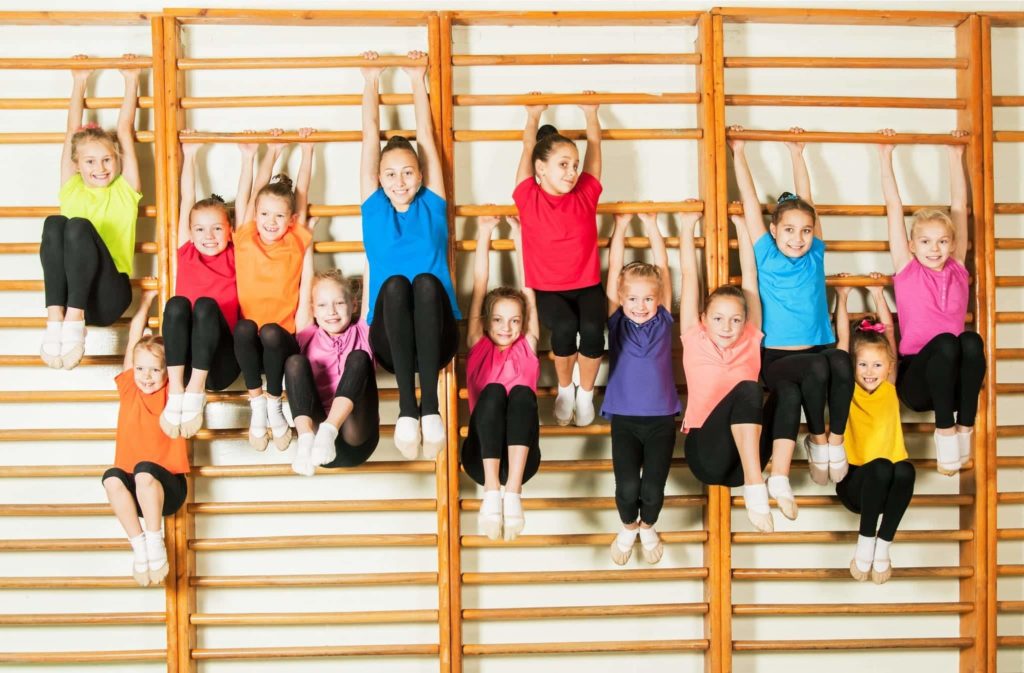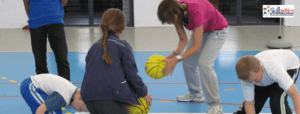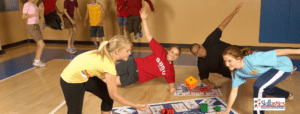There is nothing like the feelings of elation and accomplishment after exercising, but too many people never get there because they never get started in the first place. If exercising is daunting, then often, it gets avoided.
When kids fall into this category and avoid exercise, then you may need to break through resistance and find ways to overcome obstacles. How do you reach these kids so that they experience the joy and benefits of exercise?
Make it fun.
If You Build It, They Will Come
Made famous by a movie, this line is nevertheless true. Build a fun exercise program, and children will participate. Exercise can be hard for kids, from learning new moves to feeling sore muscles, and children may be difficult to convince that this discomfort is worth it.
Rather than try to prove otherwise, show them another way to view exercise. Instead of pushing kids to get active, put together programs with cooperative games in a supportive environment led by an enthusiastic and positive adult role model.
Make it fun, and kids will come.
 Making Exercise Fun
Making Exercise Fun
Kids love to have fun, and it’s part of the joy of being children. So, you want to find ways to make exercise fun to engage them and break down any barriers to exercise.
1. Be Fun
Most children will respond in kind to an adult, so be conscious of the tone you set. Develop a persona that is approachable, non-judgmental, and lighthearted. Consider your tone of voice when you explain rules or must provide redirection and shoot for one that is upbeat and high-energy. Demonstrate enjoyment for the activity with your body language and facial expressions.
2. Have Fun
Role model enthusiasm for exercise. The children are watching you explain and lead the exercise, so let them see you having fun with it. Enthusiasm is contagious, and your ability to be playful, laugh, and love what you’re doing will show through and inspire them.
3. Be Empathetic
Like anyone, children respond better to empathy, particularly when it comes to feeling uncomfortable. Worse, they may compare themselves to your ability level and feel ashamed. Break down any barriers to exercise by letting all participants know that you understand their personal goals differ and that you don’t expect perfection from the start. You can also level the playing field by acknowledging that anything is hard at first when it’s new, but as time goes on, things can get easier. Too often, the struggle to breathe and feel muscle strain prohibits people from pursuing exercise, and they give up before the benefits arrive. Reassure children that result come slowly and not overnight.
4. Provide Motivation
Because results from exercise are slow to appear, it will take constant reminders that the current work will pay off in the future. Children are so invested in the present that it’s hard for them to see long-term or understand a future outcome. Keep their eyes on the prize with regular reminders that they are working towards a goal and show them their progress as often as possible.
5. Celebrate Small
Keep your eyes open for the small victories and inflate them with praise. If you spot improvement, even in the tiniest way during the activity, take a minute to consult with the child and share your observation. Be cautious that while some children will love the attention of public praise, others are more sensitive and require quieter recognition.
6. Create Games
Most kids like a challenge and nothing inspires a young child more than the invitation to race! So, play on their youthful exuberance and build in small challenges. Find ways to incorporate exercise into fun games. Avoid games that penalize like individually timed events or breaking into opposing teams, but think more cooperative activities like working together to pass the ball across the gym, relay races as a group to beat a pre-set time, or letting each kid take the lead and rotate until all have had a chance to be a group captain throughout a game.
7. Set Expectations
It may seem basic, but when you tell the kids your expectations, then you can rule out any negative behaviors with a simple reminder of the rules. Early, tell the group that no one gets left out, everyone participates, and all of them must be supportive. Encourage positive comments to one another, reward team behavior, and spotlight leadership when you see it. Set an environment that is positive, and kids will feel safe and try new activities.
 Encourage Yourself, Too
Encourage Yourself, Too
Be aware that there is no magic key; nothing works every time on every kid! Stay flexible and reflective, learning from each experience, and tweaking your plans if necessary.
Remember, the real key is to keep trying.
About the Author
Sandy Slade is the CEO & Founder of Skillastics®, the #1 on-site and virtual physical activity resource for groups of children of all sizes. The on-site programs are designed around Skillatsics Activity Kits. These Activity kits include an innovative technique of play, executed on an oversize mat, where up to 100 children can play at one time.
The virtual programs provide students with an amazing variety of physical activity experiences that consist of 30 days of content lasting 30-40 minutes a day taught by national experts.
Skillastics® is enjoyed by over 10 million students in more than 25,000 Physical Education and After School settings nationwide.
For more information, email info@skillastics.com or check out www.skillastics.com.





